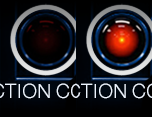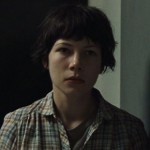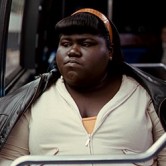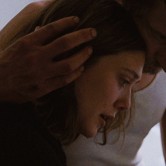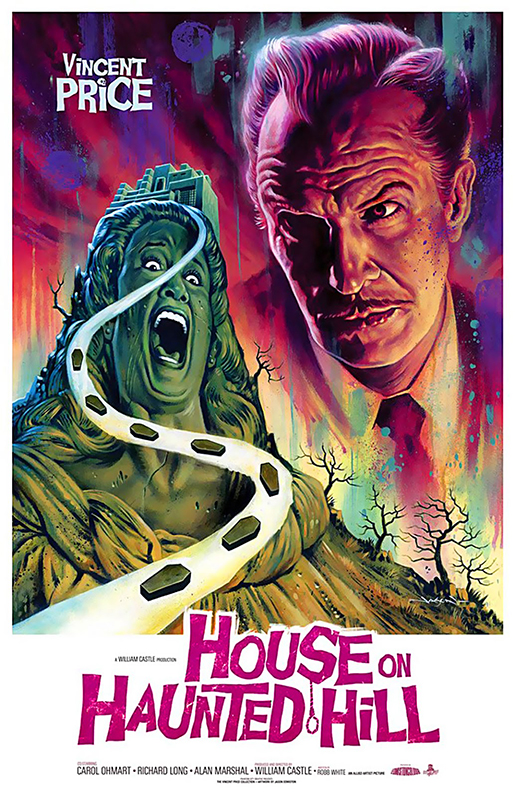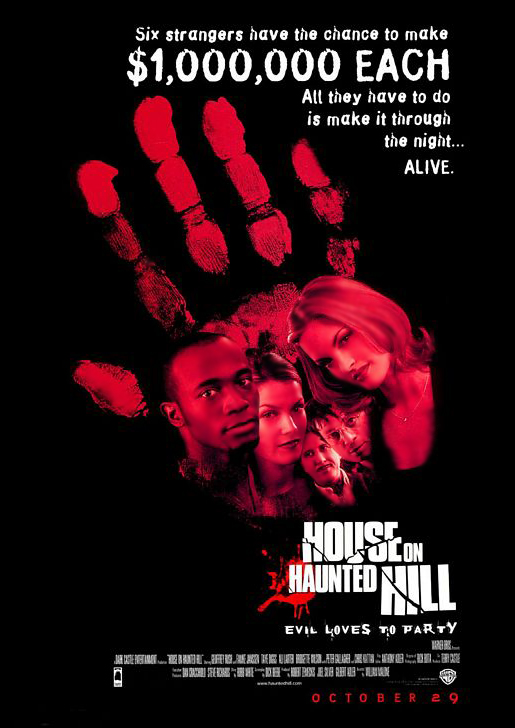Movie Review: HOUSE ON HAUNTED HILL (1959 + 1999) and The Curse of Colorization!
The Black-and-White 1959 Version
The Colorized 1959 Version
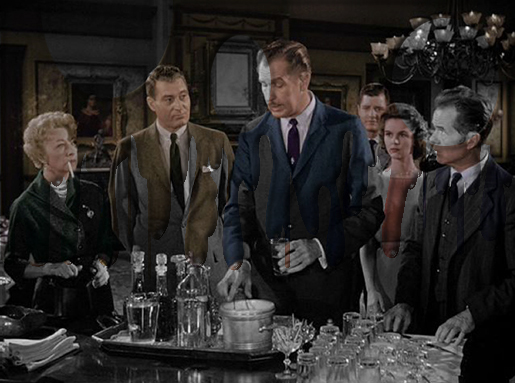
When The Price Is Dead Right
Nightfall. It is calmest before the storm as five hearses roll up the hillside carrying five fresh victims. Very much alive for now, they have all been invited by that eccentric millionaire Frederick Loren (Vincent Price) for his wife’s party… at the House on Haunted Hill. How he spoils her! To make the night more interesting (for himself), he has decreed that the guests will win $10,000 each if they last until morning locked inside the spooky mansion. They needn’t worry about losing by default of death since the money will then go to their next of kin. That Frederick… always thinking ahead.
The guests are strangers to each other as well as their host. More interesting that way. They include a typist and wallflower named Nora Manning (Carolyn Craig), the confident pilot Lance Schroeder (Richard Long), the psychiatrist Dr. David Trent (Alan Marshal), the columnist Ruth Bridgers (Julie Mitchum – Robert Mitchum’s sister!), and the owner of the house Watson Pritchard (Elisha Cook Jr.) who is visibly frightened beyond his wits. He goes on and on about their imminent doom by the housed evil. Why go in? They all need money, you see.
Just upstairs held up in her room forever freshening her face is Annabelle (Carol Ohmart), Frederick’s scheming wife. Annabelle insists that it was not he who married her, but she. She also makes no secret of the fact that she loves only his wealth and wants it all for herself. Actually, Annabelle is just wife #4, but what’s most alarming is that those last three wives are dead. Frederick knows of Annabelle’s infidelities and can’t prove them. They’re a perfect match because Annabelle is smart and can hold her own. Frederick would surely agree she is a worthy opponent. Oh, how they love implicating their petty torments on one another! It is their mutual hatred that makes their relationship so strong.
Seven people have already died in the house, which is entrenched in cobwebs and dust, lit by candlelight, and riddled with hidden passageways. It even has a torture chamber in the basement. A large trapdoor down below covers up a little pool of acid. The soundtrack is helped along with eerie wails and howls (*Wooo!*). Frederick gets the party going by reminding everyone they’re as isolated as Clarice Starling was at the old Lippman place. “There’s no electricity. No phone. No one within miles. So no way to call for help.” At least, there’s a great deal of booze.
Elisha Cook Jr. plays Watson as a man more shaken than all the liquor he devours. His face is frozen in perplexity and dread as he utters such lines as, “Only the ghosts in this house are glad we’re here.” Leaning towards madness, he picks up a knife concealed in an armrest and announces it was used by his relatives – the house’s last victims – with energy verging on panic. He remembers how pieces of their body parts were scattered “in places you wouldn’t think.” Like the fantastical murder case set in Sleepy Hollow, the heads have yet to be found. Cook Jr. is good in this role. After all, he had practice playing the little guy who “deserved something better,” according to Bogart’s Marlowe in The Big Sleep (1946).
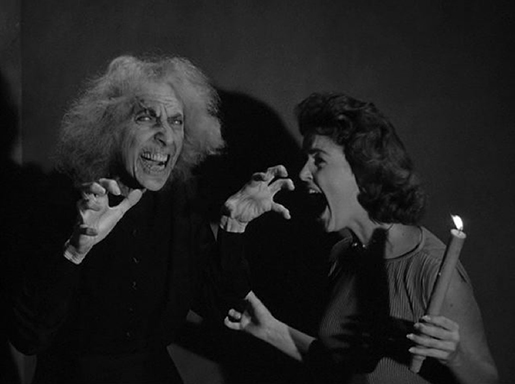
As for the rest of the party guests, they’re more like dimmer switches. Nora, however, is a scream – and by that, I mean she’s a loud screamer. It’s probably why she’s at the serving end of everything mean and shocking that happens. She is the quintessential damsel-in-distress. No one believes her when she finds a severed head in her vanity case. Whenever He-man Lance hangs around her playing Protect-Her™, he’s never around when she’s in real danger. To add insult to gender, she is an unwitting pawn in a conspiracy to kill someone. Just give her a handgun. She’s jumpy.
Lance, I must confess, does the smartest thing a man stuck at an all-night shindig would do: Flirt with the cute brunette all night. From his back to upper lip, the doctor Dr. David Trent is a real stiff. Trent gives Ben “Bueller” Stine a run for his money on the Dull-O-Meter. Which begs the question why anyone would see anything in him. Ruth the famous columnist has her hands full of the whiskey glass more than her notepad and pen. Speaking of which, she is victim of that pesky blood dripping on her hands on more than one occasion. No wonder she always looks peeved.
Thankfully, the film doesn’t spend excessive time with those saps. Look at it this way; less of them means more Price. The best special effect in the whole film is Vincent Price. That Machiavellian scam! Ohmart cleverly plays Annabelle with brittle innocence and passive aggressiveness. Never raising her voice, her little smile hides gnashing teeth. It’s a challenge for Price to get on her nerves. Aiming the bottle of the bubbly at her head – a fitting metaphor of his tightly-capped masculinity about to explode – Frederick tells her, “It’d make a good headline: Playboy Kills Wife with Champagne Cork.”
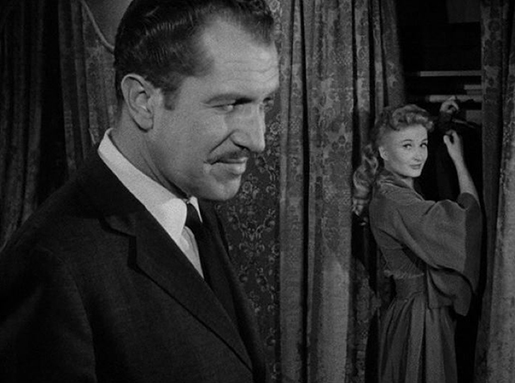
Vincent Price uses the same soothing, insinuating tone and poise that Alfred Hitchcock would also master in his own introductions and movie trailers. Hitchcock was more deadpan, but just as calculating. They both relish gallows humour, so long as they get to deliver such lines in a dry manner with a phantom wink. “There’ll be food and drink and ghosts… and maybe even a few murders.” Price’s voice only lilts when he mentions the possibility of murder. He just can’t help but raise the corners of his lips into a mischievous smile. Price’s thin, villainous mustache curls at its own ends as if already in anticipation. Right after Frederick grabs hold of Annabelle’s golden curls Kirk Douglas-style and convinces her to come down and enjoy her party, Price breaks the fourth wall and looks right at us just as he says, “I wonder how it will end.”
With The Uninvited (1944) over a decade ago, House on Haunted Hill was one of the earliest films to set the mold for more haunted house movies to come with such varied results in style including The Innocents (1961), The Haunting (1963), most of the tales in Kwaidan (1964), Hausu (1977), Stanley Kubrick’s The Shining (1980), The Entity (1981), the first two Evil Dead movies by Sam Raimi, The Others (2001), and that terrific film House of the Devil (2009). A good argument could be made for the inclusion of Charles Laughton’s The Night of the Hunter (1955). House on Haunted Hill rests comfortably between that of the atmospheric silent picture by James Sibley Watson The Fall of the House of Usher (1928) – the very first of its kind – and its superb remake titled House of Usher (1960) by Roger Corman. Corman was a master at adapting horror stories by Edgar Allen Poe for the screen, which also starred Vincent Price.
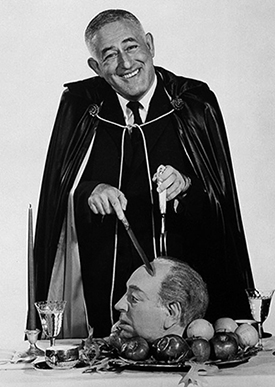 When William Castle released his film theatrically, he relied on another of his promotional gimmicks to lure in audiences. Its movie trailers all announced the coming of “EMERGO!” How it worked was Castle placed an elaborate pulley system in some theaters that allowed a plastic skeleton to be flown over the audience during specific scenes. Even the skeleton got a credit playing “himself” at the end of the film. “EMERGO!” was nevertheless destined to be a one-hit wonder, but it worked and made Castle and his company a profit from their $200,000 budget. You can see the mentality at play behind the scenes when the Dr. David Trent character speculates that “a $50,000 party for only five people is a little steep, even for a millionaire.”
When William Castle released his film theatrically, he relied on another of his promotional gimmicks to lure in audiences. Its movie trailers all announced the coming of “EMERGO!” How it worked was Castle placed an elaborate pulley system in some theaters that allowed a plastic skeleton to be flown over the audience during specific scenes. Even the skeleton got a credit playing “himself” at the end of the film. “EMERGO!” was nevertheless destined to be a one-hit wonder, but it worked and made Castle and his company a profit from their $200,000 budget. You can see the mentality at play behind the scenes when the Dr. David Trent character speculates that “a $50,000 party for only five people is a little steep, even for a millionaire.”
Alfred Hitchcock noted House on Haunted Hill’s successful return and opted to make his own low-budget horror movie — a little film called Psycho (1960). With the exception of a needless psychoanalytical explanation for the killer at the end, Psycho stands as one of the greatest American movies alongside other Hitchcock masterpieces Rear Window (1954) and his greatest one Vertigo (1958). As a fitting tribute of admiration to the Master of Suspense, Castle and his team went on to make their own Psycho – Homicidal (1961). It didn’t match Psycho’s greatness, but remains one of its better knock-offs.
Castle used his gimmicks to reward those who decided to attend his creepy features. He was a true showman who saw business as being able to just keep making more movies. This was the same man who sent a small charge of electricity to zap the movie patron’s seats in his film The Tingler (also released in 1959 and starring Price). There’s little doubt that the writer Robb White saw Castle as inspiration for the trickster Frederick. Joe Dante even made a tribute to Castle (Lawrence Woolsey premieres “MANT!”) in his lovely 1993 film Matinee, which you can read more about in my Scene to be Seen. Up the ladder of technical professionalism, Castle is a step above Ed Wood, but with the soles of Roger Corman’s feet stepping on his fingers. Like those two, the man just loved filmmaking. This is what separates Castle from the cheap, cynical hucksters of Hollywood these days.
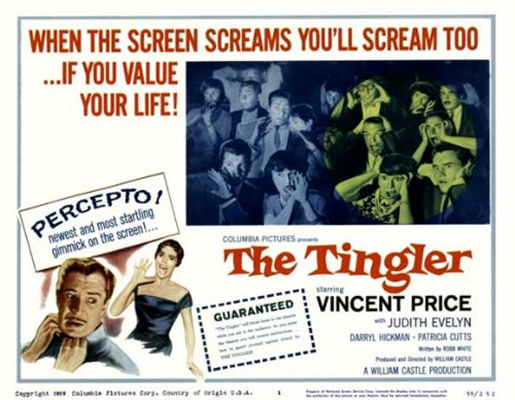
To understand Castle the ringmaster better, consider the caretakers of the haunted house who have agreed to lock up the guests. They come in the form of a old, ghoulish couple. If they aren’t married to each other, they never will be. Their attempts to warn young Annabelle of the dangers are, to put it most kindly, ineffective. It is one of those attempts that inspires the movie’s best jump-in-your-seat scare. I witnessed a bunch of people freak out when it was screened recently. A pity it comes so soon. The scene makes little sense the more you think about it, but Castle wasn’t one to belabour such points. He got his scare and doesn’t care to analyze it. Plot hole, schmot hole! Most would consider this a weakness, but it would have been a greater one to put a brake on its narrative tracks.
Oddly enough, the movie is infamous for being a ghost story, but is really a caper revolving around a murder plot that is cloaked with supernatural elements. Like the end of a Scooby Doo cartoon, the paranormal monstrosities are revealed to be man-made creations. Before we can confirm the promise of other horrors to come, the movie ends by literally pushing us out of the house, closing the door in our face and laughing manically. Clocking in at 75 minutes, the ending could be seen as a premature one, but for Castle the main plot is over and the smoke is clearing. The 1959 film has done its job.
House on Haunted Hill (1999)
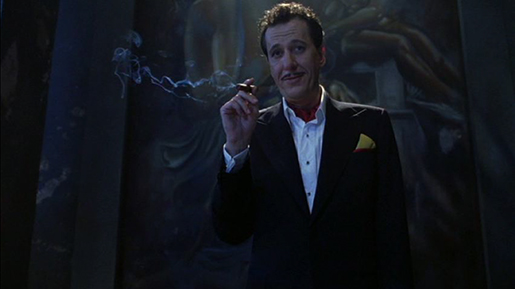
What a Rush!
Still, one can’t help but imagine what would have happened had some real ghosts struck. How are the remaining characters going to escape alive? It just so happens that filmmaker William Malone and writer Dick Beebe were wondering exactly that. In 1999, they released their own adaptation of the William Castle film by the same name. It’s not so much a direct remake as an elaboration on what the seven people trapped in the House on Haunted Hill did where we left them. Much like picking up where we left off with Ash coming face to face with the POV of the Evil Force.
Panned by critics and dismissed largely by audiences, the 1999 film is actually pretty good in its own right. Its distributor Warner Bros. had dropped it into the Halloween time slot with a weak ad campaign. Even I was pleasantly surprised after reluctantly catching up with it on DVD ten years ago, thanks to a friend who lent it to me. The film’s weak performance was also due to Haunted House Fatigue, thanks to an early summer release of another haunted house remake. Dreamworks had taken on the 1963 Robert Wise film The Haunting with a bigger budget and a high profile cast including Lili Taylor, Liam Neeson, and Catherine Zeta-Jones — her character was introduced as bisexual and then that desperate stab at character development was instantly forgotten by its writers. Despite its terrific special effects, The Haunting was overlong (113 minutes!) and pretentious (“It’s about family!!!”). Malone’s House on Haunted Hill doesn’t make that mistake.
Like his predecessor, Malone is a film director who gives a damn about putting on a show. Grisly gore and updated details are to be expected. This time the stakes are raised to a million dollars for each who stay the night. What’s surprising is the visceral style and wit that is brought to the production. He elevates his material with some unique touches. Sequences as unexpected as the Price Amusements theme park (Inside a shaky 20-foot elevator: “Don’t worry! We have yet to lose a single customer!”) as well as the freaky horror fun-house ride inside the Saturation Chamber that was intended to snap insane patients back to reality — imagine a sane person being locked inside.
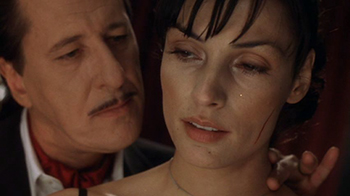 What’s more is that Geoffery Rush sinks his teeth grinning into the Vincent Price role, paying homage, channeling and making the insidious host his own. Like the original, his scenes with his spiteful wife played by Famke Janssen are the best parts. Most surprising and radical from the original is Price’s reaction towards his wife when things get very dire. Peter Gallagher is a far more charismatic doctor here, which make his motivations more believable. As the paranoid homeowner, Chris Kattan strikes just the right notes of comic relief while remaining true to his character. I especially like that he’s no fool. He knows the house is evil (“It has no morals… because it is a fucking house!”) and is not willing to stick around for a cool million. Pity about those reinforced steel doors locking down earlier than expected.
What’s more is that Geoffery Rush sinks his teeth grinning into the Vincent Price role, paying homage, channeling and making the insidious host his own. Like the original, his scenes with his spiteful wife played by Famke Janssen are the best parts. Most surprising and radical from the original is Price’s reaction towards his wife when things get very dire. Peter Gallagher is a far more charismatic doctor here, which make his motivations more believable. As the paranoid homeowner, Chris Kattan strikes just the right notes of comic relief while remaining true to his character. I especially like that he’s no fool. He knows the house is evil (“It has no morals… because it is a fucking house!”) and is not willing to stick around for a cool million. Pity about those reinforced steel doors locking down earlier than expected.
The cinematography is striking and the music by Don Davis is genuinely macabre. An establishing shot of the guests approaching the towering house along with the operatic score is not far behind the one where Belle cranes her neck up at the castle that holds her father. And the classical music playing as the guests enter the house is none other than Brahms’ Piano Quartet In G Monor, Opus 25, Excerpt – the same piece Monsieur Hulot listened to religiously in the Patrice Leconte masterpiece Monsieur Hire (1989/1990). And be sure to stay after the end credits for a look at what sweet hell awaits those who didn’t last the night. The 1999 remake has some pulse!
“House on Haunted Hill” (1999) Trailer
Seriously, the trailer doesn’t do the film justice.
“House on Haunted Hill” (1999) Main Title Sequence
The Curse of its Colorization!!!
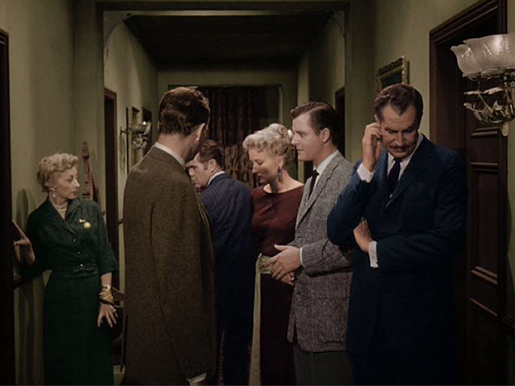
Going back to the 1959 film, it behooves me to bring up something far more dreadful than the two movies combined could ever dish out. Colorization. Digitally painting colors over the original black-and-white print doesn’t work well. Colorized movies are just downright unpleasant. Ted Turner tried so hard to push it down our eye sockets back in the 1980s. He had it in for black-and-white. Joe Dante made fun of him for that in Gremlins 2: The New Batch (1990) through Daniel Clamp (John Glover), a chipper Trump-like vulgarian with his steel office above the clouds.”Casablanca, now in full color, with a happier ending!”
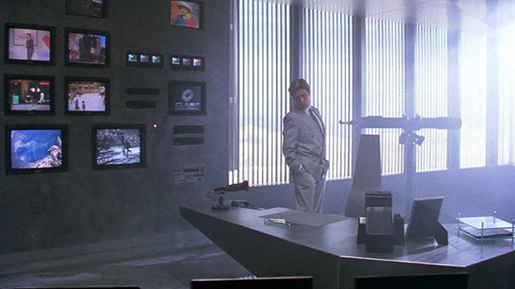
This one time, J. Hoberman of the Village Voice wrote that “colorization is the perfect metaphor for the Reagan era — take the fifties and slap a shiny new coat of candy-coated spackle over it for easy digestion.”
Yet Legend Films, a movie studio that specializes in the process got the rights and did wrong by coloring House on Haunted Hill (1959). The DVD was released in 2005 and remains at large in consumer outlets. To their credit, they did include the original black-and-white version… tucked right into the Special Features. The original film is a Special Feature right along with the theatrical trailer and a slide show of the original press book. It couldn’t even share space with the colorized version in the DVD’s Main Menu. Shows how insecure the folks at Legend Films are about their colored one. A little over two dozen employees working there were responsible for its existence. They include Color Producers David Martin, Susan Olney, Barry Sandrew, and Creative Director Rosemary Horvath.
Barry Sandrew, the founder of Legend Films, went on the record that his company “does not plan to colorize titles that were shot in black-and-white for artistic purposes, unless the original creators of the works participated in the color design.” If it’s a question of artistic integrity, that would put Mr. Sandrew out of a job. By his creed, that severely limits whatever opportunities his company can exercise in colorization at all. Good. They’ve also done Reefer Madness (AKA Tell Your Children (“Pot Will Turn Them Insane”)) (1936), a hilarious historical oddity that has no effect in its value colorized or not.
Twenty-five years ago, Siskel & Ebert made an excellent case about the wrongheadedness of colorizing old black-and-white movies. The colorizing producers are not just reveling in bad taste, they are encouraging it. What’s worse is that they do not respect our intelligence. This will always be relevant the longer some people persist that they’ll never watch a movie made in black-and-white unless they can see some oranges, blues, and purples in there. The colorization process has left behind over a hundred victims including The Phantom of the Opera (1925), Casablanca (1942), and A Christmas Carol (1951).
There is purity in a black-and-white movie. The image is all about its visual values. Shadow and light. It is also a great novelty. So few of us get to experience seeing the world in black and white. It’s great to be able to do that!
Siskel & Ebert on the Horrors of Colorization (Part 1)
Siskel & Ebert on the Horrors of Colorization (Parts 2-4)
The total run time is 24 minutes.
It would be so bloody easy to make my point by just show you the hack job done onto George A. Romero’s Night of the Living Dead (1968). It too was released by Legend Films after being dragged through the process by Off Color Films, a perfect name for the company considering their work. The film was nabbed after the ownership rights of its original film company Image Ten Productions expired. The colorization is so awful that I don’t even have to show you the alternate black-and-white composites.
Grab your hurl bag and take deep breaths.
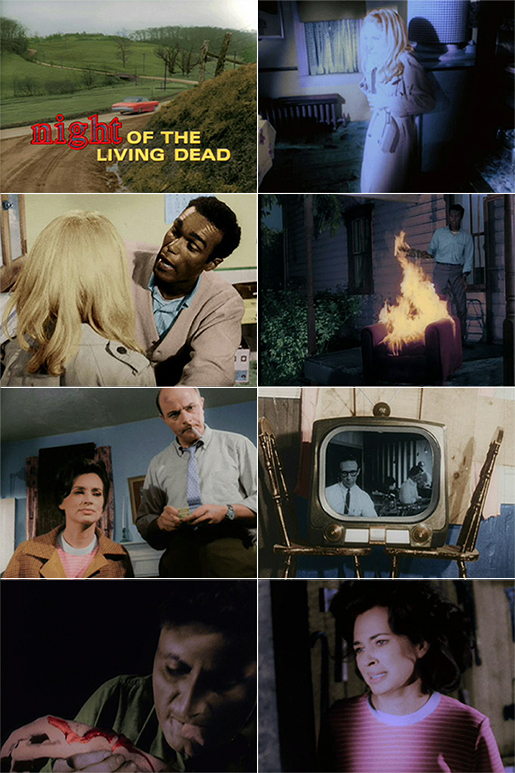
Echoing in my head are the whispery gasps of Brando’s Kurtz, “The horror! The horror!” This putrid vandalism is downright criminal! Looking at these tarnished stills, I feel in sync with Morticia Addams when she scolded Debbie “The Black Widow” Jelinsky about the unforgivable: “Pastels?”
Right there! Colorization SUCKS!
Case closed.
Regrettably, I do not take the easy route. To give colorization its best shot, I will size up Legend Films’ colorized print of House on Haunted Hill, which is more competent than previous paint-by-night shootings. Technically, it’s… better. This generosity is akin to slicing off a pound of my flesh. But that doesn’t make the colored version anything less than a spit in the eye of Castle and, most particularly, the director of photography Carl E. Guthrie. The quality of its technique stops short of its cheap purpose of being.
For these frame by frame comparisons, I captured each image by the millisecond from each of the colorized version as well as the restored black-and-white prints. The results wouldn’t have been accurate had I just desaturated the color out of the colorized picture and called it a day. No, it is never easy for me.
One more thing I have to mention before we start is that the Legend Films DVD of Night of the Living Dead does include a black-and-white version as a Special Feature, but the problem is they desaturated THEIR COLORIZED PRINT! into faux black-and-white. Never mind those splotchy grays, highlights don’t have a prayer of showing up now. They called it a day and just ruined Night of the Living Dead for everyone. If you’re lucky to find the Millenium Edition DVD produced by Elite, watch it to see the right blacks and whites.
What’s most scary is that the Legend Films DVD is the highest in circulation that the movie is available to the public. Anyone interested in one of the greatest horror movies of all time has a greater chance of seeing it for the first time splattered with that wretched colorization. The front cover reads, “The Classic is now in DEADLY COLOR!” Yes, it kills the movie.
At least those at the Legend switch found their conscience and released House on Haunted Hill in a remastered black-and-white print. I shouldn’t have to feel this way, it should just be done right, but I’m thankful for this. After a resounding sigh of relief, this brings us to…
Page: 1 2
© 2008 – 2024, CINELATION | Movie Reviews by Chris Beaubien. All rights reserved.


